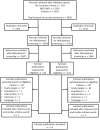The Treatment of Snake Bites in a First Aid Setting: A Systematic Review
- PMID: 27749906
- PMCID: PMC5066967
- DOI: 10.1371/journal.pntd.0005079
The Treatment of Snake Bites in a First Aid Setting: A Systematic Review
Abstract
Background: The worldwide burden of snakebite is high, especially in remote regions with lesser accessibility to professional healthcare. Therefore, adequate first aid for snakebite is of the utmost importance. A wide range of different first aid techniques have been described in literature, and are being used in practice. This systematic review aimed to summarize the best available evidence concerning effective and feasible first aid techniques for snakebite.
Methods: A systematic literature screening, performed independently by two authors in the Cochrane Library, MEDLINE and Embase resulted in 14 studies, fulfilling our predefined selection criteria, concerning first aid techniques for snakebite management. Data was extracted and the body of evidence was appraised according to the GRADE approach.
Principal findings: The pressure immobilization technique was identified as the only evidence-based first aid technique with effectiveness on venom spread. However, additional studies suggest that proper application of this technique is not feasible for laypeople. Evidence concerning other first aid measures, such as the application of a tourniquet, suggests avoiding the use of these techniques.
Conclusions: The practical recommendation for the treatment of snakebite in a first aid setting is to immobilize the victim, while awaiting the emergency services. However, given the low to very low quality of the data collected, high quality randomized controlled trials concerning the efficacy and feasibility of different variations of the pressure immobilization technique are warranted.
Conflict of interest statement
The authors have declared that no competing interests exist.
Figures
References
-
- World Health Organization (WHO). Venomous snake distribution and species risk categories. 2010. http://apps.who.int/bloodproducts/snakeantivenoms/database/
-
- Ohman A, Flykt A, Esteves F. Emotion drives attention: detecting the snake in the grass. J Exp Psychol Gen 2001;130: 466–478. - PubMed
-
- Kasturiratne A, Wickremasinghe AR, de SN, Gunawardena NK, Pathmeswaran A, Premaratna R, Savioli L, Lalloo DG, de Silva HJ. The global burden of snakebite: a literature analysis and modelling based on regional estimates of envenoming and deaths. PLoS Med 2008;5: e218 10.1371/journal.pmed.0050218 - DOI - PMC - PubMed
Publication types
MeSH terms
LinkOut - more resources
Full Text Sources
Other Literature Sources
Medical


